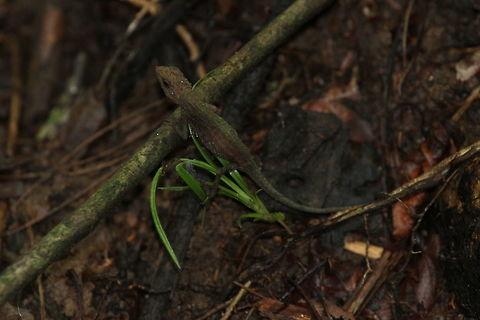
Appearance
The rough-nosed horned lizard has an X-shaped dorsal ridge at back of its head. Tympanum hidden under the skin. A weak dorso-nuchal crest confined to the neck region. Gular fold absent. Body slightly compressed. Lamellae under fourth toe counts 11-14.Males are dark brown or brick-red dorsally and on the flanks. Females may be similar to males in coloration and can be lighter, with some individuals have four diamond-shaped marks and black spots or longitudinal lines on dorsum.
Distribution
A ground-dwelling species and lives in pairs. Restricted to the moist lowlands and submontane dipterocarp forests region in southern Sri Lanka, including Hiniduma, Kottawa below 900m of elevation.Habitat
A ground-dwelling species and lives in pairs. Restricted to the moist lowlands and submontane dipterocarp forests region in southern Sri Lanka, including Hiniduma, Kottawa below 900m of elevation.Reproduction
2 eggs are laid at a time.Evolution
A terrestrial species, it is found on leaf litter in well-shaded forests, usually in pairs. Two soft-shelled eggs are laid.References:
Some text fragments are auto parsed from Wikipedia.